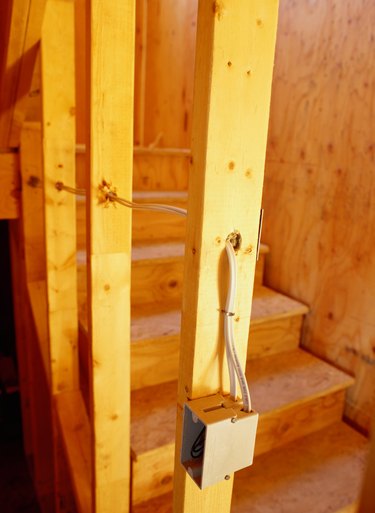
The load bearing property of any wood depends on the actual piece of wood. A log has different characteristics from a board, and each board has differences in length, grain and knots that can affect its capacity to bear weight. That said, when all other things are equal, there are differences between wood strength that can be attributed to the species of that wood.
Some of the Variables
Video of the Day
Wood gets its strength from its longitudinal cellulose fibers. A dense wood that bears weight on the ends of those fiber bundles, like a stump does, can achieve the load carrying capacity of structural steel. When loads are borne perpendicular to the grain of the wood, the load bearing capacity of the wood is at its least. Some kinds of wood have great fiber strength but tend to warp when cured, which reduces their load carrying capacity. Wood with large and frequent knots loses some of its ability to bear weight.
Video of the Day
Vertical and Horizontal
Structural boards that bear weight on end are vertical studs, which reinforce lateral load-bearers like headers and top plates. These lateral boards become weaker as the distance between unsupported spans increases. Relatively soft woods can be routinely used as studs or other vertical supports, while horizontal lumber is either cut larger, paired for greater strength, or employs a stronger species of wood.
Inexpensive Softwoods
The most common structural species of lumber is pine. Pine grows straight and it grows quickly. It is relatively easy to cut and mill. All these features make pine less expensive than other structural lumber species. Pine, however, is a softwood with a relatively low density. In places where pine is the most common structural lumber species, and there are special concerns about particular load-bearing features in the construction, builders will often use Douglas fir. It is compatible with pine, comparatively inexpensive compared with other denser alternatives, and very strong.
The Really Strong
Density does not always translate into greater load-bearing capacity, but in some cases, it does. Among the common species of structural lumber, North American elm, oak and maple are prized for their strength in construction. Elm is so strong and water-resistant that it is the preferred timber for wooden bridge abutments and dock pilings. Maple is strong and attractive, so it is often used in wooden floors and cabinets. Oak, at nearly 1 1/2 times the density of pine, is still the construction standard for heavy-load bearing interior beams.